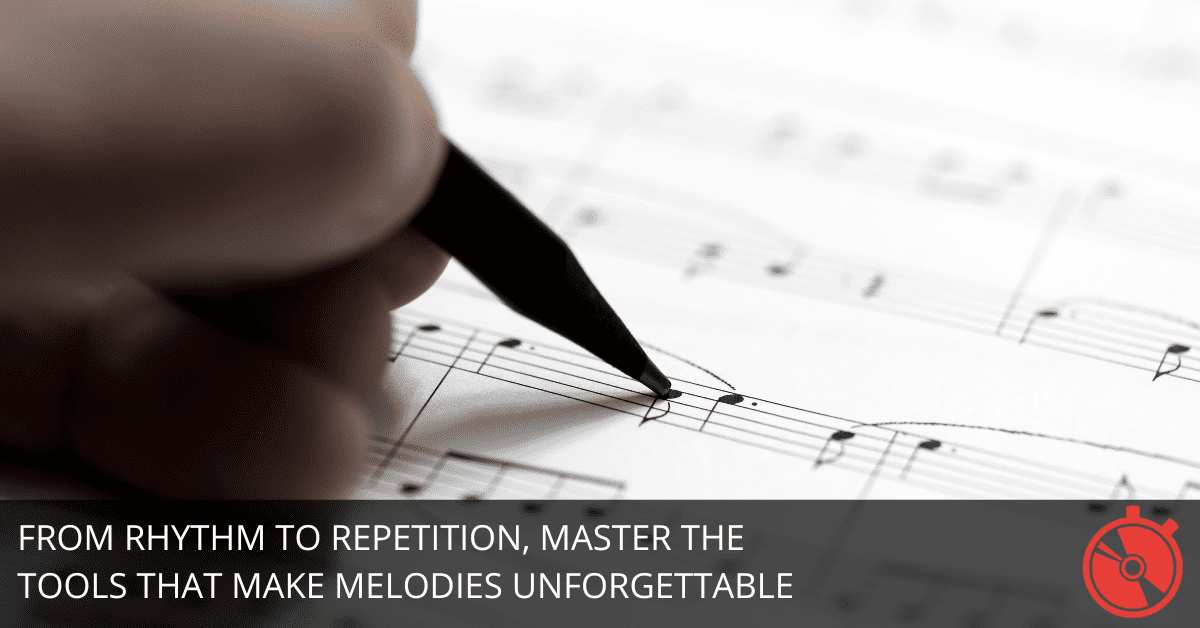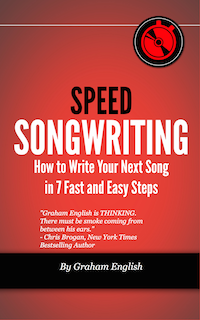
Whether you’re chasing chart-toppers or crafting personal ballads, writing great melodies is essential.
But let’s cut the fluff: memorable melodies aren’t born from mysterious bursts of inspiration. They’re crafted. And with the right tools and techniques, you can write melodies that stick like glue.
Here’s how to master the process and take your songwriting to the next level.
1. Understand What Makes a Melody Work
Think of your melody as the “air” floating above your song’s foundation—fluid, dynamic, and free to move. It’s the tune listeners hum long after your song ends.
Great melodies are simple, memorable, and monophonic (one note at a time). They consist of motifs (small musical ideas) and phrases (larger collections of motifs).
But simplicity doesn’t mean boring. Take a four-note motif. Repeat it, tweak it, flip it upside-down, or stretch it out. These subtle variations keep listeners hooked. A melody works best when it dances above a stable foundation, like chords or rhythm. Start thinking of melodies as the emotional voice of your song—something that must evoke, move, and linger.
2. Start with Rhythm, Not Notes
Melody and rhythm are inseparable. To write better melodies, focus on rhythm first.
For example, tap out a simple three-beat pattern like “dum-dum-dum” over a steady tempo. Then, try syncing this rhythm to different note lengths—quarter notes, eighth notes, syncopated patterns. This rhythm-first approach often breaks creative blocks.
Next, layer notes onto your rhythm. You don’t need to get fancy; even quarter notes can create a hook. Move those notes around, starting on strong beats for emphasis or weak beats for tension. If you’re stuck, grab a drum machine or metronome and experiment with simple loops. Building rhythmically grounded melodies will give your work an irresistible groove.
3. Let Chord Progressions Lead the Way
If rhythm is your melody’s skeleton, chord progressions are its heartbeat.
Pick a chord (like C major), then experiment with the notes within it (C, E, G). These notes are your safe zone. Now, add a little tension by sprinkling in non-chord tones or “neighbor notes” to create movement.
For example, start with the root chord (C major), move to a contrasting chord (A minor), and finish with a resolution chord (F major). Your melody can flow naturally within this framework, building tension as you approach resolutions. And don’t be afraid to let the melody steer. If it’s pulling you toward a new chord, trust your gut and follow the sound.
4. Write Melodies That Fit Your Lyrics
Lyrics and melodies are a team.
Start by examining your lyrics’ rhythm—how the syllables naturally flow. Mark stressed syllables (e.g., “dum” for strong, “duh” for weak). Then, match your melody to these accents.
For example, if your lyric reads, “I can’t hold on,” use a melody that emphasizes “can’t” and “hold” while letting “on” resolve downward. A rising melody may suggest urgency or questioning, while a descending one can feel conclusive. The goal? Make your melody feel like it belongs to your lyrics, not the other way around.
5. Keep It Simple and Memorable
Simplicity doesn’t just mean fewer notes; it’s about creating something that sticks.
Catchy melodies often rely on repetition. Think about Adele’s Rolling in the Deep—a handful of notes, repeated with subtle variation, creates a hauntingly memorable hook.
Want to test your melody? Sing it. If it’s awkward to sing, chances are it’s awkward to remember. Use rests strategically to give your audience breathing room. Silence between phrases creates anticipation and lets your melody breathe. And don’t forget: most people aren’t professional singers. Stay within an octave and a half to keep your melody accessible.
6. Create Emotional Tension and Release
Every great song balances tension and release, and your melody should do the same.
Start by identifying the strong and weak beats in your time signature. For example, in 4/4 time, the first beat is the strongest, and the third beat is slightly less so. Placing critical melody notes on these strong beats creates stability, while weaker beats can introduce tension.
Think of the pre-chorus as your tension-builder. Add more rhythm, fewer rests, and rising melodic lines to push toward the chorus. Then, let the chorus release all that energy with longer, simpler phrases and a higher pitch range. This push-and-pull dynamic keeps listeners emotionally invested.
7. Experiment with Melodic Shapes
Here’s the truth: melodies don’t need to be complicated. They either go up, down, or stay the same.
Use these movements strategically. A melody that arcs upward can feel hopeful or climactic, while a descending line might feel reflective. Combining these shapes creates contrast.
For instance, start your verse with a descending melody to establish a calm tone, use an upward arc in the pre-chorus to build excitement, and land on steady, repetitive notes in the chorus for singability. These shapes are your paintbrush—use them to sculpt the emotional contour of your song.
8. Collaborate Smarter, Not Harder
If you’re co-writing, make peace with this rule: let your partner be “right” most of the time.
Collaboration thrives on give-and-take. If you’re debating over a lyric or melody line, ask yourself, “Does it hurt the song?” If the answer is no, let it slide. The long-term benefit of a harmonious partnership outweighs small creative wins.
That said, communicate clearly. Share your melodic vision upfront, whether it’s a genre-specific hook or a particular vibe. Collaboration isn’t just about compromise; it’s about combining strengths. Play to each other’s skills, and you’ll write songs neither of you could create alone.
9. Borrow From the Best (Without Copying)
When in doubt, steal—ethically.
Analyze melodies from your favorite songs. Look at how they structure motifs, build tension, or create contrast. For example, strip down a melody to its rhythm and rewrite it with your notes. Or, flip the process: borrow the notes and create your rhythm.
Think of this as reverse engineering. You’re not copying the melody; you’re using it as a blueprint to understand what works. Over time, you’ll develop your own style by absorbing the strengths of others.
10. Test Your Melodies in the Wild
The best melodies aren’t just good in theory—they’re good in practice.
Record your melody, even if it’s rough. Play it back and imagine it in a live setting. Will the audience remember it after one listen? Is it singable? Does it fit your song’s emotional tone?
Take your melody for a test drive with friends or collaborators. Better yet, post a draft in a private group or workshop. Feedback often reveals issues you can’t see yourself. But don’t overthink it. At the end of the day, melodies are meant to be felt, not overanalyzed.
Writing melodies is an art and a craft. With these tools in hand, you can build a repeatable process for creating songs that resonate. Now, stop reading and start writing. The world needs your next song.

Enter your first name and email address below and click “GET ACCESS NOW!” to get the Speed Songwriting Cheat Sheet delivered to your inbox!
We guarantee 100% privacy. Your information will not be shared.

Awesome info, Graham! I gotta start putting this stuff to use!
Thanks, Robert! Let me know if I can ever help.
Awesome article! I will implement these ideas.
Thanks so much! I’m glad you found it helpful. Let me know how these techniques work for you—I’d love to hear the melodies you create!
This is great advice Graham…it certainly sets the stage for creation to those of us who do not really know where to begin. This blog describes it as the building blocks and fundamentals of constructing a great song. Thank you!